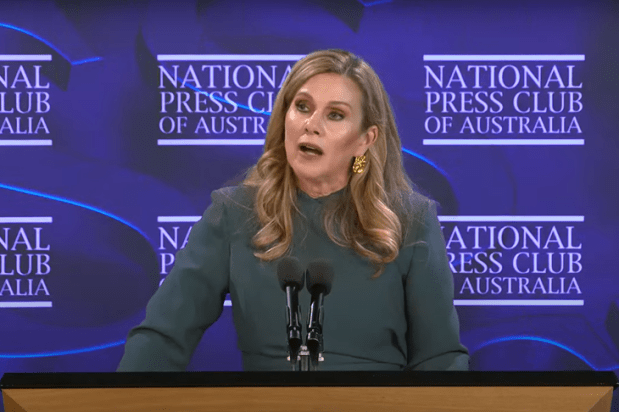The GenCost 2024-25 report, published annually by CSIRO in partnership with the Australian Energy Market Operator (AEMO), has become a cornerstone for discussions about the future of Australia’s energy mix. It is the authoritative tool for comparing the costs of power generation technologies in Australia. It is designed to inform policymakers, investors, and analysts about the costs and trade-offs of different electricity generation technologies, providing a comparative lens for decision‑making. But as the energy landscape becomes more complex, with competing demands for decarbonisation, reliability, and affordability, the limitations of this report, particularly in how it assesses nuclear energy, have become increasingly apparent.
CSIRO’s authors give nuclear top billing in the report’s first chapter, a tacit acknowledgment that it is a potentially important option for Australia, but then dismiss it almost entirely on cost grounds. They use the most expensive project they could find as their benchmark, effectively re-framing nuclear not as a serious contender but as a prohibitively costly outlier. This is more than a technical quibble. It reshapes the narrative about nuclear’s viability in Australia’s energy transition. And it boils down to four mistakes:
1. Cherry‑picking the priciest projects
CSIRO’s GenCost pins its nuclear numbers to Canada’s Darlington SMR project, hardly a fair benchmark. This FOAK (first of a kind) build carries a C$20.9 billion (≈US 15.1 billion) price tag for four BWRX‑300 reactors, with the first unit alone costing C$6.1 billion and shared systems adding another C$1.6 billion. But Darlington is no ordinary project: it’s a prototype, weighed down by development costs, regulatory novelty, new supply chains, and first-time inefficiencies. Independent studies show FOAK builds can cost 30-60 per cent more than later units. For example, by the fourth BWRX-300 reactor, costs are expected to fall to around US $12,900/kW, nearly 30 per cent lower than the first. In other words, GenCost uses the most expensive example to represent an industry that, like any other, gets significantly cheaper once it gets moving. Ontario Power Generation’s CANDU refurbishment program proves the point: a C$12.8 billion overhaul that delivered its first unit on budget and the second an impressive 169 days ahead of schedule, with about C$136 million in cost improvements between units. The third unit is expected to come more than 140 days ahead of schedule and below budget too. Repetition, standardisation and hard-earned experience slash costs, exactly what Australia would benefit from if it got serious about nuclear.
2. Missing context: other countries are already driving costs down
GenCost ignores what’s happening overseas, where nuclear costs have fallen thanks to repeat builds. In the UAE, the Barakah project, built by Korea’s KEPCO, delivered four large APR1400 reactors with clear cost reduction from unit 1 to unit 4. In China, the story is even clearer: multiple AP1000 and Hualong One reactors have been built in just five to six years, at construction costs as low as US $2,300/kW, with some domestic CPR‑1000 units even lower (around US $1,748/kW). Their levelised costs of electricity are about US $62/MWh. MIT modelling, benchmarked on past projects, shows that for next‑of‑a‑kind AP1000s, costs could range between US $8,300-10,375 /kW, with electricity costs of US $78–97/MWh when investment incentives are included.
3. Australia’s future reactors would be NOAK — not FOAK.
If Australia decides to build nuclear, it won’t start from scratch. It would use proven, licensed global designs like the AP1000, ABWR, BWRX‑300, APR1400 or Hualong One, and tap into established international supply chains and experienced contractors. Literature suggests cost ‘learning rates’ of 5-15 per cent[JB1] per doubling of cumulative capacity, with subsequent units coming in about 30 per cent cheaper.
4. LCOE hides the real system costs of intermittent renewables
Finally, GenCost leans heavily on Levelized Cost of Electricity (LCOE). This single-figure metric has long been popular for comparing generation technologies because it averages the costs of building and operating a plant over its lifetime. But it is an incomplete and outdated way of evaluating technologies that interact very differently with the grid. By focusing narrowly on LCOE, GenCost leaves out the expensive extras needed to make intermittent renewable generation work: new transmission lines, grid firming, large‑scale energy storage, and the costs of curtailing surplus power. In doing so, it fails to capture the true cost of delivering reliable, decarbonised electricity. When those extra costs are included in the comparison, nuclear becomes one of the most competitive technologies on a whole‑of‑system basis.
The Verdict
If GenCost is truly meant to guide Australia’s energy future, it owes the public a richer, more accurate accounting of nuclear’s potential. One that:
- Reflects broad, real-world experience, not just FOAK projects
- Accounts for global learning curves and cost benchmarking
- Values the whole-system contribution of firm, clean power
Without that, it risks locking Australia into costlier, less reliable pathways, while leaving policymakers, investors, and the public to make billion‑dollar decisions on an incomplete picture.

























